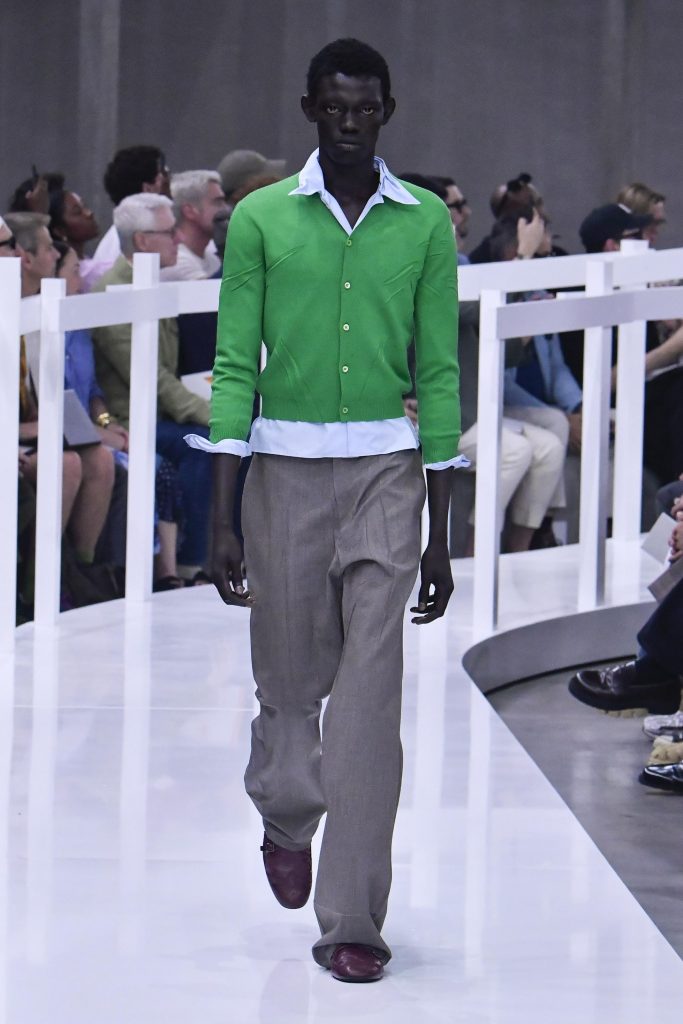The “King of Color Forecasters,” Pantone, typically releases its Color of the Year in early December. But paint brands, design firms and fashion experts aren’t waiting around—nearly a dozen have announced their preferred hues, and a consensus has formed. Three major forecasters have landed on variations of green. Some suspect Pantone will join the trend, naming a green shade for its 2026 Color of the Year.
Green Takes The Lead
Behr Paint’s pick is Hidden Gem, a smoky jade that blends blue and green. The company describes it as capturing “understated elegance and timeless sophistication.”
Valspar opted for Warm Eucalyptus, a muted sage-like green with gray undertones.
A brighter, vibrant green is the choice of WGSN, a global trend forecaster, and its sister color system, Coloro. Transformative Teal is a bright, aquatic blue-green that shifts like sunlight on clear ocean water.
“It appears we’re all tapping into a global mood shaped by the desire for balance, renewal, and connection to the natural world,” says Erika Woelfel, Behr’s vice president of Color & Creative Services.
Editors at Better Homes & Gardens are also favoring green for 2026. Specifically, Olive Brown, Light Dusty Teal, Energetic Green and even what they call “Ugly Greens,” which have greater amounts of yellow and olive.
Fashion’s Green Moment
Green is also having a moment on catwalks, in corporate rebranding and in design houses.
“Spring/Summer 2025 collections from Prada, Gucci, and Saint Laurent showed green in every mood, from high-energy chartreuse to refined military shades,” says Peter Martinez, co-founder & fashion stylist/designer at the fashion brand Leather Skin Shop. He predicts menswear will pick up the trend, leaning into “hunter, olive, and clay greens, while womenswear embraces mineral and sea-glass tones.”
Will Pantone Go Green?
The case for green is strong. Multiple forecasters agree that the fashion world is saturated with the color, and brands are aligning around its values.
“The odds of Pantone naming a green for 2026 are exceptionally high,” Martinez says. “Greens are dominating major forecasts, appearing strongly in fashion, interiors, and product design. The color resonates deeply on an emotional level.”
The fashion retailer Poshele is also on board with a Pantone green selection. “On recent runways, I have seen deep teals, smoky jades, and warm eucalyptus greens in everything from silk dresses to tailored coats in wool, leather, and technical fabrics,” says John Smith, Poshele’s vice president of design.
Celebrities are amplifying the message. Craig Barnes, creative director at the agency, Bloom, points to Brad Pitt’s lime green suit from his Bullet Train premiere. While Pitt’s outfit appeared a few years back, Barnes believes “we all feel ready to accept a revival of this color.”
Gucci Goes Green
Color shifts don’t happen in a vacuum. Branding and cultural institutions have begun moving toward green as well, signaling values of renewal and sustainability.
The Women’s Tennis Association unveiled a bold green in its recent rebrand. In the UK, Boots’ organic skincare line, “Botanics,” replaced its soft naturals with a “dark, mossy green to reemphasize their philosophy in ‘the power of plants,’” Barnes says.
Gucci is also on board with the color. “Gucci replaced its iconic red with deep green at Milan Fashion Week,” says Javier Burkle, founder and principal at Burkle Creative. “It was a cultural signal that luxury is realigning around themes of renewal, balance, and sustainability.”
Consumers Are Ready To “Fully Embrace” Green
Pantone might buck the green trend, although it has been known to reflect the broader color narrative, says Lauren Saab, founder of the Dallas-based design group, Saab Studios. “Green feels less like a fleeting pick and more like the defining tone of the year ahead,” she says. “The rare alignment across design, fashion, and culture suggests consumers are ready to fully embrace it.”
The last time Pantone chose green for its Color of the Year was in 2017. The company billed Greenery as “a fresh and zesty yellow-green shade.” It was a hue that seemed to burst with chlorophyll.
The preference for that brighter shade of green, however, has shifted.
“The greens that brands are choosing now aren’t about boldness or aesthetic play,” says Abigail Olivas, head of strategy at the brand agency, No Single Individual. “They’re calibrated. Toned down. Used less to stand out, and more to signal calm, control, and clarity.”
Pantone noted that its Greenery color pick provided reassurance “amid a tumultuous social and political environment,” similar in sentiment to what color forecasters point to for 2026.
That tumult, of course, has arguably doubled.
If Pantone joins the crowd, it could mark the return of green—not brash and chlorophyll-bright, but sophisticated, subtle and enduring.

